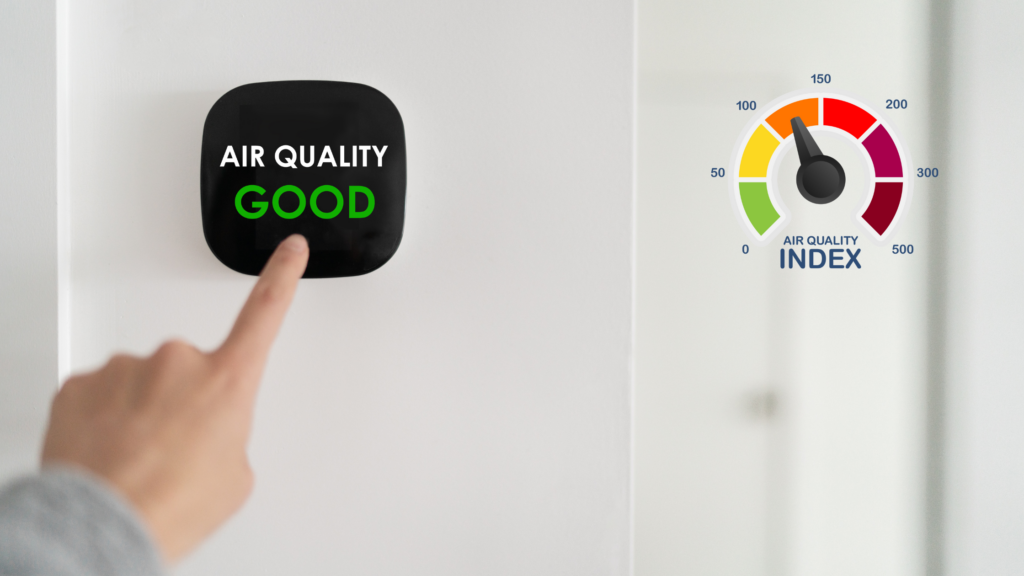
The Air Quality Index (AQI) is an essential tool used globally to understand and communicate the quality of the air we breathe. As urbanization, industrialization, and vehicular traffic increase, the significance of AQI in safeguarding public health becomes even more important. Whether you’re planning a morning walk, a jog in the park, or outdoor playtime for your children, knowing the AQI helps you make safer choices.
What is AQI?
The Air Quality Index (AQI) is a standardized scale developed to assess and report the condition of the ambient (outdoor) air. It is designed to indicate how polluted the air currently is or how polluted it is forecast to become. AQI values range from 0 to 500, although values over 300 are rare and considered extremely hazardous.
AQI incorporates the measurements of six major air pollutants that are known to cause harm to human health and the environment:
- Ground-level Ozone (O₃)
- Particulate Matter (PM 2.5 and PM 10)
- Carbon Monoxide (CO)
- Sulphur Dioxide (SO₂)
- Nitrogen Dioxide (NO₂)
Each of these pollutants has a different impact on health, and they originate from various sources such as vehicles, industries, power plants, and natural sources like forest fires and dust storms.
Why is AQI Important?
AQI acts as a public health tool, providing vital information in a simple format so people can understand when to take precautions. The index is especially useful for:
- People with respiratory or cardiovascular conditions
- Children and the elderly
- Pregnant women
- Outdoor workers
- Athletes and fitness enthusiasts
Timely awareness about poor air quality can help individuals avoid outdoor exposure during dangerous times, reducing the risk of illness or complications.
The Six AQI Categories and Their Health Implications
AQI values are divided into six color-coded categories to quickly indicate the health impact of the current air quality. Here’s a breakdown of these categories:
🟢 Green (0–50): Good
- Air quality is considered satisfactory.
- Health Implication: Air pollution poses little or no risk to anyone.
- Advice: Ideal time for outdoor activities.
🟡 Yellow (51–100): Moderate
- Air quality is acceptable, but there may be some pollution present.
- Health Implication: Sensitive individuals (such as people with asthma or severe COPD) may experience mild respiratory symptoms.
- Advice: Most people can continue normal activities. Sensitive individuals should watch for symptoms.
🟠 Orange (101–150): Unhealthy for Sensitive Groups
- The air quality begins to reach levels that may pose a risk to vulnerable populations.
- Health Implication: People with pre-existing lung or heart conditions, children, and older adults may experience adverse effects.
- Advice: Sensitive groups should limit prolonged outdoor exertion.
🔴 Red (151–200): Unhealthy
- Air quality is poor and potentially dangerous for all.
- Health Implication: Everyone may begin to experience health effects, with sensitive individuals being at a greater risk.
- Advice: Children, the elderly, and patients with respiratory issues should stay indoors. Outdoor physical activity should be avoided.
🟣 Purple (201–300): Very Unhealthy
- A health alert situation.
- Health Implication: Increased likelihood of serious health effects for the general population.
- Advice: Everyone should avoid outdoor activity. Use of air purifiers is recommended indoors. Schools should consider suspending outdoor play.
🟤 Maroon (301 and above): Hazardous
- Emergency conditions.
- Health Implication: Severe health warnings of emergency conditions. The entire population is more likely to be affected.
- Advice: Avoid all outdoor activity. Close all windows and doors. Use N95 masks if going outside is unavoidable.
Health Impact of Common Air Pollutants
Let’s take a closer look at the six major pollutants that influence the AQI:
- Ozone (O₃):
- Formed when sunlight reacts with pollutants like nitrogen oxides and volatile organic compounds.
- Can cause chest pain, coughing, throat irritation, and worsen asthma.
- Particulate Matter (PM2.5 and PM10):
- PM2.5 are fine particles that can enter deep into the lungs and even the bloodstream.
- Linked to heart attacks, decreased lung function, and premature death.
- Carbon Monoxide (CO):
- Produced by combustion (vehicle engines, gas stoves).
- Reduces oxygen delivery to the body’s organs and tissues.
- Sulphur Dioxide (SO₂):
- Results from burning fossil fuels.
- Causes throat irritation, wheezing, and shortness of breath.
- Nitrogen Dioxide (NO₂):
- Mainly from traffic emissions.
- Can lead to increased respiratory infections in children.
How Can You Monitor AQI?
There are various ways to stay updated about the AQI in your area:
- Government-run websites and mobile apps (like SAFAR, AQICN, and CPCB in India)
- Smartwatches and fitness bands with AQI features
- Smart home devices with air quality monitoring sensors
Tips to Protect Yourself During Poor Air Quality Days
- Stay indoors during high pollution levels.
- Use air purifiers to keep indoor air clean.
- Wear N95 or N99 masks when stepping out.
- Keep windows closed to avoid pollutants from entering.
- Avoid outdoor exercise as it increases the intake of polluted air.
- Use indoor plants that help purify air like spider plant, aloe vera, or peace lily.
- Stay hydrated and maintain a healthy diet to support your respiratory system.
Understanding AQI is no longer optional—it’s essential. With increasing pollution levels across many cities around the world, knowing the AQI helps you make informed decisions for your health and well-being. Whether you’re a parent, a health worker, an athlete, or just someone concerned about environmental issues, monitoring AQI empowers you to take control of your exposure and protect yourself and your loved ones.